Cytochrome 2C19 inhibition
Whilst cytochrome 2C19 has a relatively minor role in the metabolism of xenobiotics (<10% of drugs) it is involved in the metabolism of several important groups of drugs including many proton pump inhibitors and anti-epileptics. In addition genetic polymorphism exists for CYP2C19 expression, with approximately 3–5% of Caucasian and 15–20% of Asian populations being poor metabolisers with no CYP2C19 function.
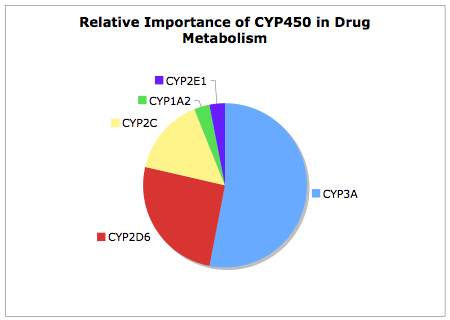
CYP2C19 Inhibition Data from ChEMBL
ChEMBL is a database of bioactive drug-like small molecules, it contains 2-D structures, calculated properties (e.g. logP, Molecular Weight, Lipinski Parameters, etc.) and abstracted bioactivities (e.g. binding constants, pharmacology and ADMET data). Currently it contains data for 1,359,508 molecules and 9,414 different targets. ChEMBL contains data for CYP2C19 inhibitors, I downloaded all the IC50 data and imported it into Vortex, I then deleted those results that the ChEMBL team had flagged as potentially unreliable. Then I calculated a number of physicochemical properties using a variety of scripts.
Looking at the scatter plot below it appears that LogP has little impact on inhibition, in addition zwitterions (orange) are not potent inhibitors.
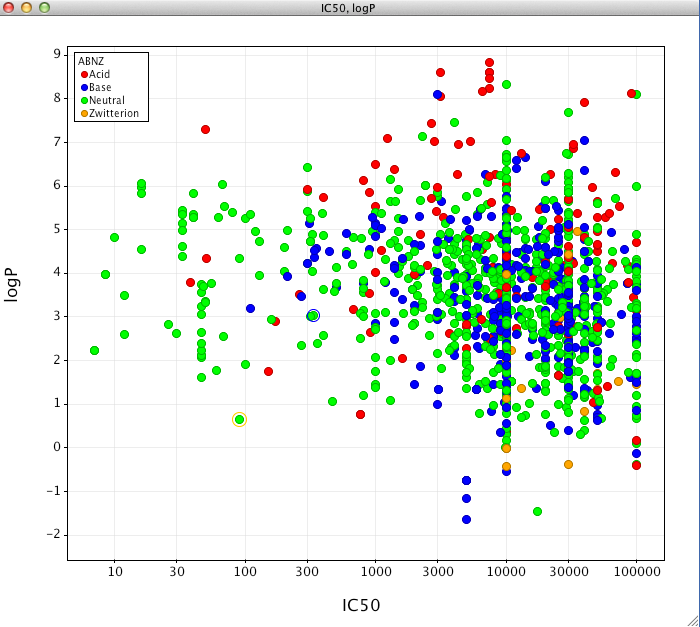
If we plot the calculated most basic pKa versus IC50 we can more clearly see that the majority of the more potent CYP2D6 inhibitors are neutral, whilst 10% of neutral molecules display CYP2C19 inhibition < 1 uM, the percentages of acids (5%), bases (2%) and zwitterions (0%) are much lower.
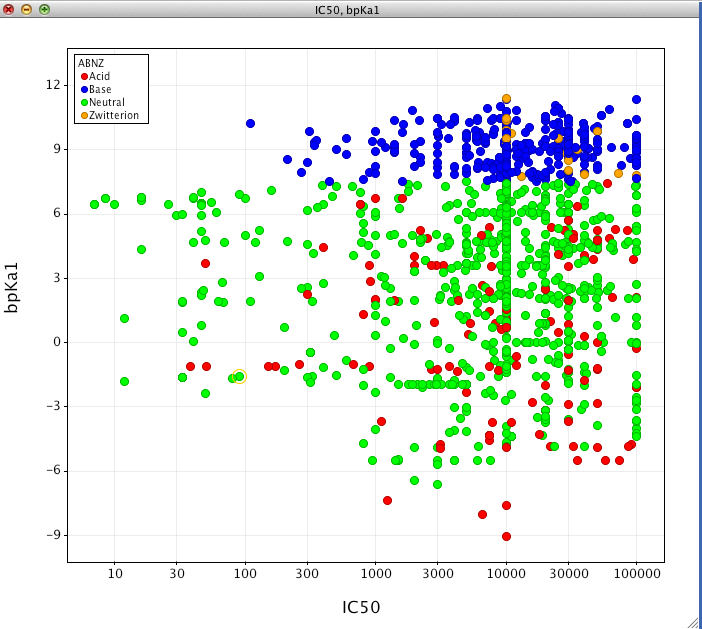
Interestingly the majority of the CYP2C19 inhibitors contain a heteroaromatic nitrogen that could potentially coordinate to the iron in the active site. In the plot below the highlighted points are molecules selected by running a substructure search for a nitrogen bonded to carbon via a double or aromatic bond.
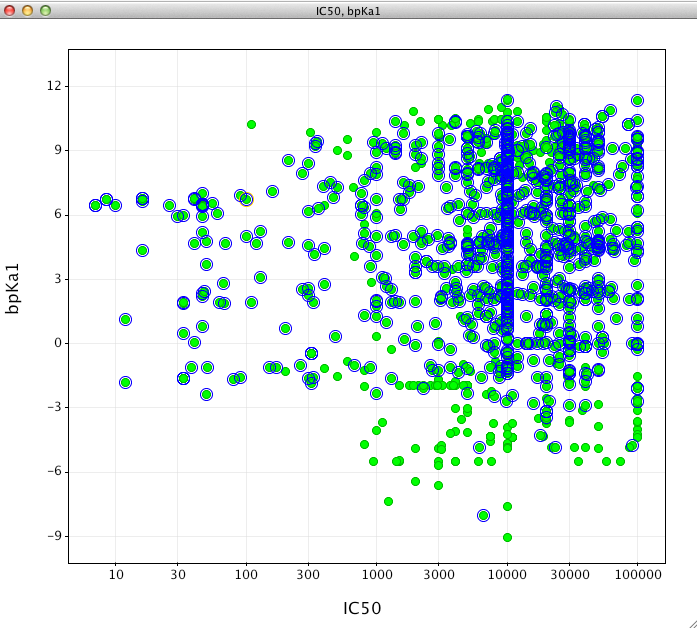
Matched Pair Analysis
Using Vortex to conduct a matched pair analysis helps to identify small changes that have a significant influence on the CYP2C19 inhibition. As might be expected many of the more potent inhibitors have a heterocycle that can coordinate to the iron in the haem ring of the cytochrome. The matched pair analysis identifies a number of examples where modification of the heterocycle has a significant effect on inhibition. Either by sterically encumbering the nitrogen proposed to coordinate to the iron, or by reducing the electron density on the nitrogen. An alternative approach has been to replace a pyridine with the bioisosteric fluoro or chloro phenyl. These results mirror those described in more detail on the CYP3A4 inhibitors and CYP2D6 inhibitors pages.
Whilst most of the more potent inhibitors contain a heterocycle that can coordinate to the iron there is a group of molecules that have a rather different structure, that have some similarity to the known CYP2C19 substrate and inhibitor meclobemide.
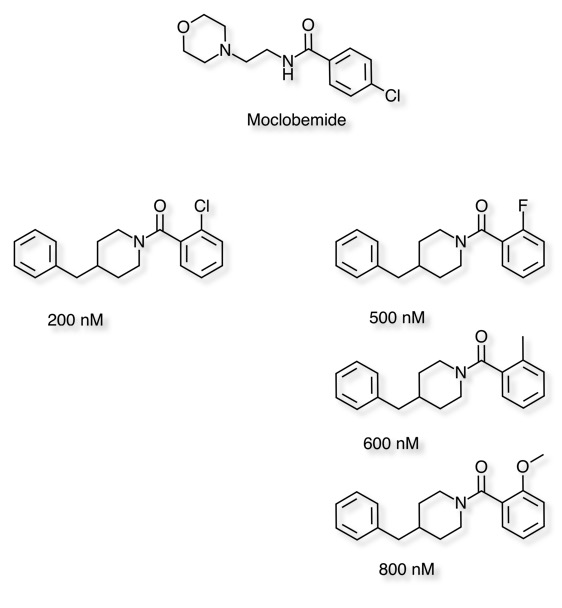
See Also
Last Updated11 November 2018